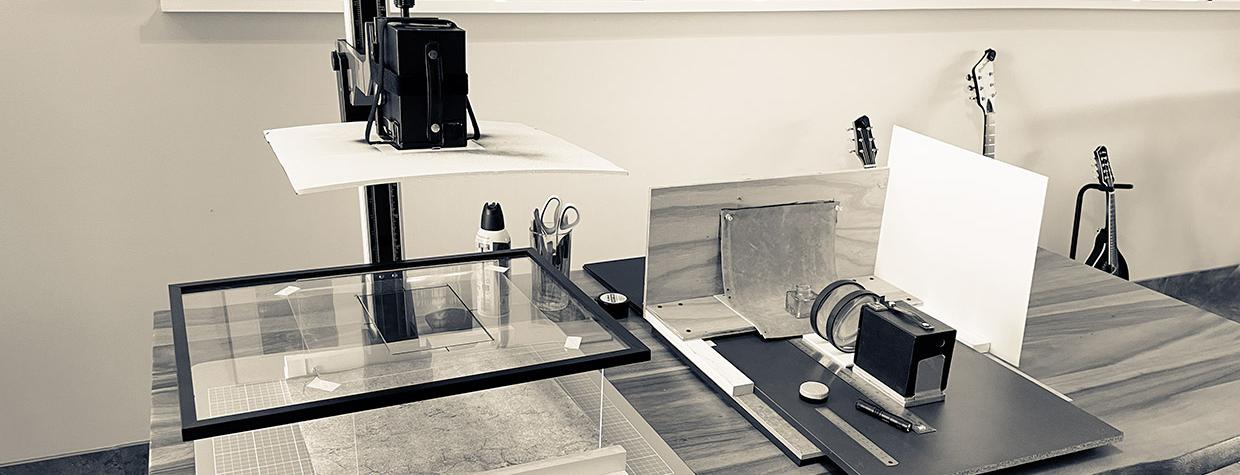My first photograph is also my first memory. I made the image in 1951, when I was 3 years old, with a Brownie Target Six-20 camera. I remember it vividly: I was on a walk with my parents on a brisk fall day in a forest preserve near Chicago. My father showed me how to line up the shot in the camera’s viewfinder, and then how to work the shutter to make the photograph. It’s my favorite portrait of my parents. Surprisingly, I still have that camera. And I’m still using it.
The pandemic lockdown was the genesis of my “Brownie project.” I’d always hoped that I could do something creative with the camera. So, about 10 years ago, I bought 10 rolls of Kodak Plus-X 620 film. Unfortunately, I never found the time. That is, until the lockdown. Just like that, I had an opportunity to experiment.
Earlier in my career, when I was teaching photography, I’d tell my students that you don’t make photographs with a camera — you make them with your brain. By that I meant: A good photographer can take any imaging equipment, no matter how simple, and create an interesting photograph. The Brownie project was a chance to prove my theory.
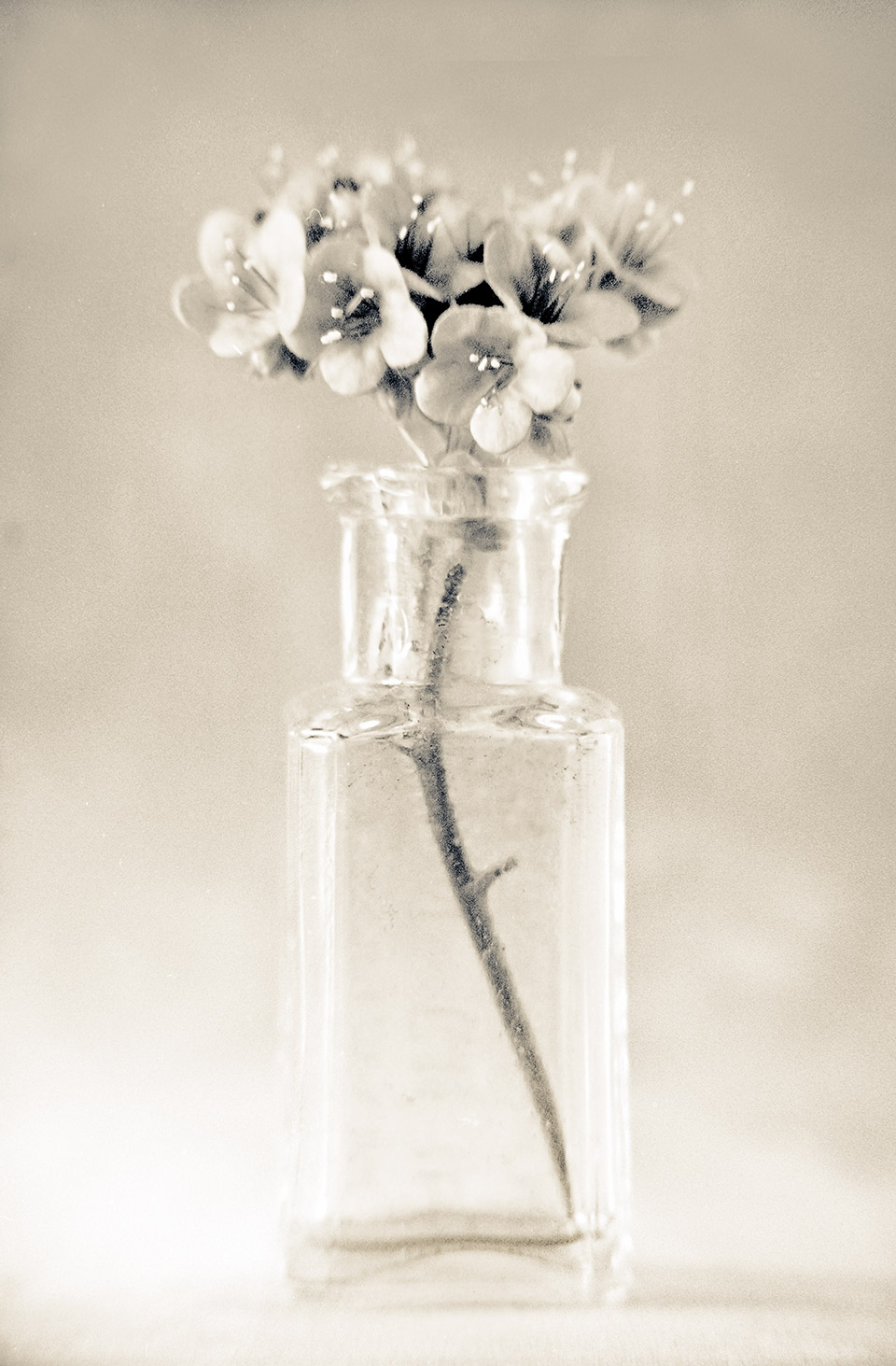
The camera is about as simple as it gets. It’s just a black box with a single-element lens, a shutter and two choices of aperture. The shutter also has a “bulb” function, which can be kept open for long exposures. They don’t make 620 film anymore, so I had to take 120 film, which is the same size, and respool it onto 620 film spools.
I knew I wanted to do something different with the Brownie — something the camera wasn’t designed to do — so I started thinking about close-ups or photographing at dusk, dawn or nighttime. As a professional, I used to shoot a lot of plants and landscape architecture, so that’s always been an interest. Plus, two of my favorite photographers, Edward Weston and Karl Blossfeldt, are known for their botanical close-ups. In many ways, this portfolio is a tribute to them and what they taught me through their photography.
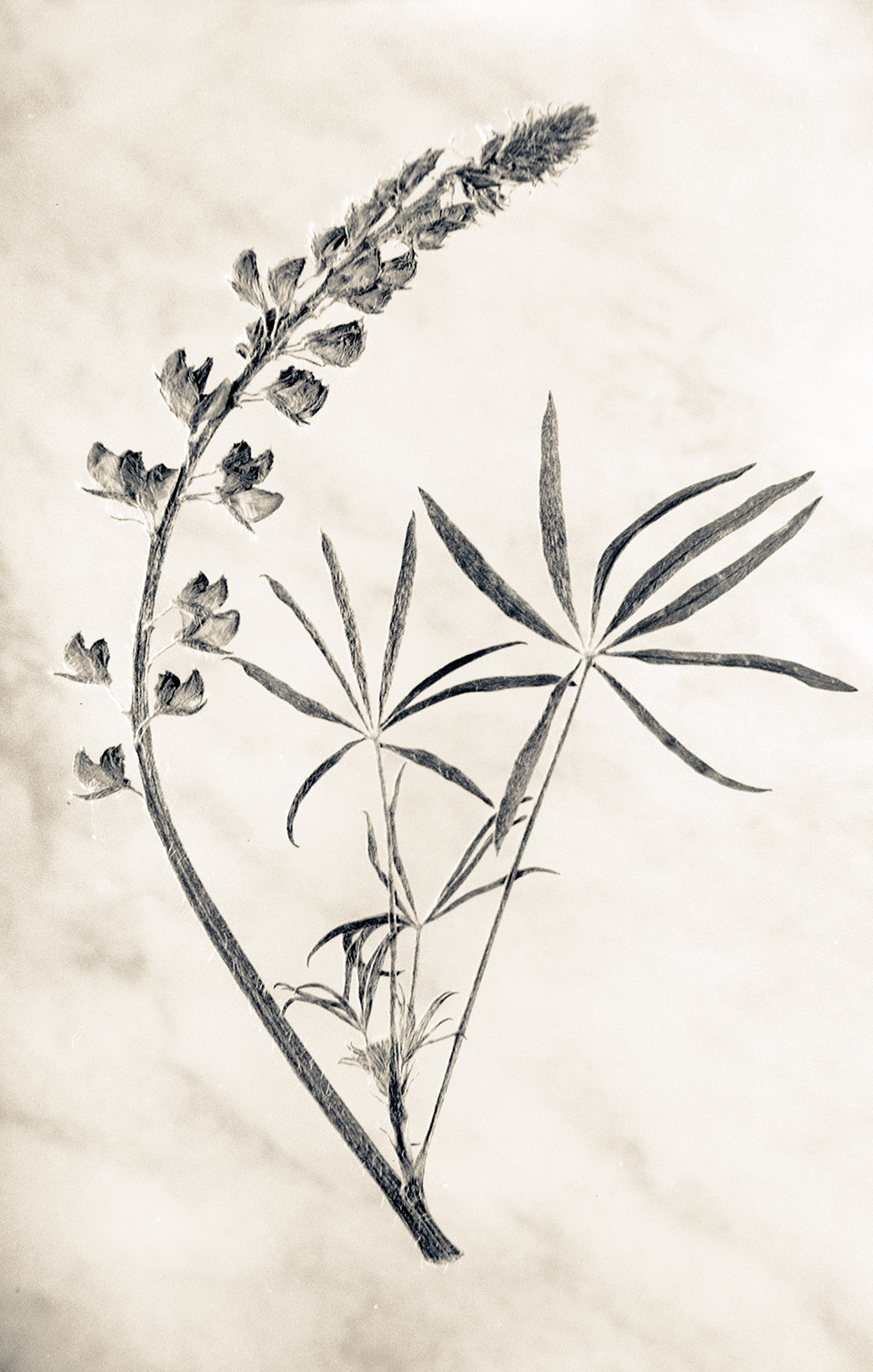
Having decided to shoot close-ups, the next thing I needed to do was figure out a way to make it happen, so I started looking around the house. A few months earlier, I’d purchased a pair of 3X magnifying glasses. I figured I’d take one of them, put it in front of the camera and see if I could find a point of focus. After shooting a couple of test rolls and having no success, I tried adding the second magnifier. It helped. I started getting closer to a sharp image. After more test rolls and a lot of adjusting — with both the camera and the magnifying glasses — I finally was able to get to an alignment that resulted in a reasonably sharp point of focus.
My images are one-to-one with this setup. In other words, life size on the film, in which each frame is 2 by 3 inches. That means my subjects couldn’t be more than about 2.5 inches tall.
I have a friend, Janet Traylor, whose father was an engineer who worked on some of the West’s major water projects. On weekends when she was young, he used to take his family to explore old mining camps, where they’d rummage through dumps and middens, looking for bottles and other collectibles. I can’t remember how it came together, but when I saw Janet’s tiny pill and medicine bottles, I knew I’d found my subject. During the pandemic, my wife, Katie, and I would take long walks in our neighborhood. Along the way, we’d collect plants and flowers from the empty lots, as well as from our own garden, for me to photograph in Janet’s bottles.
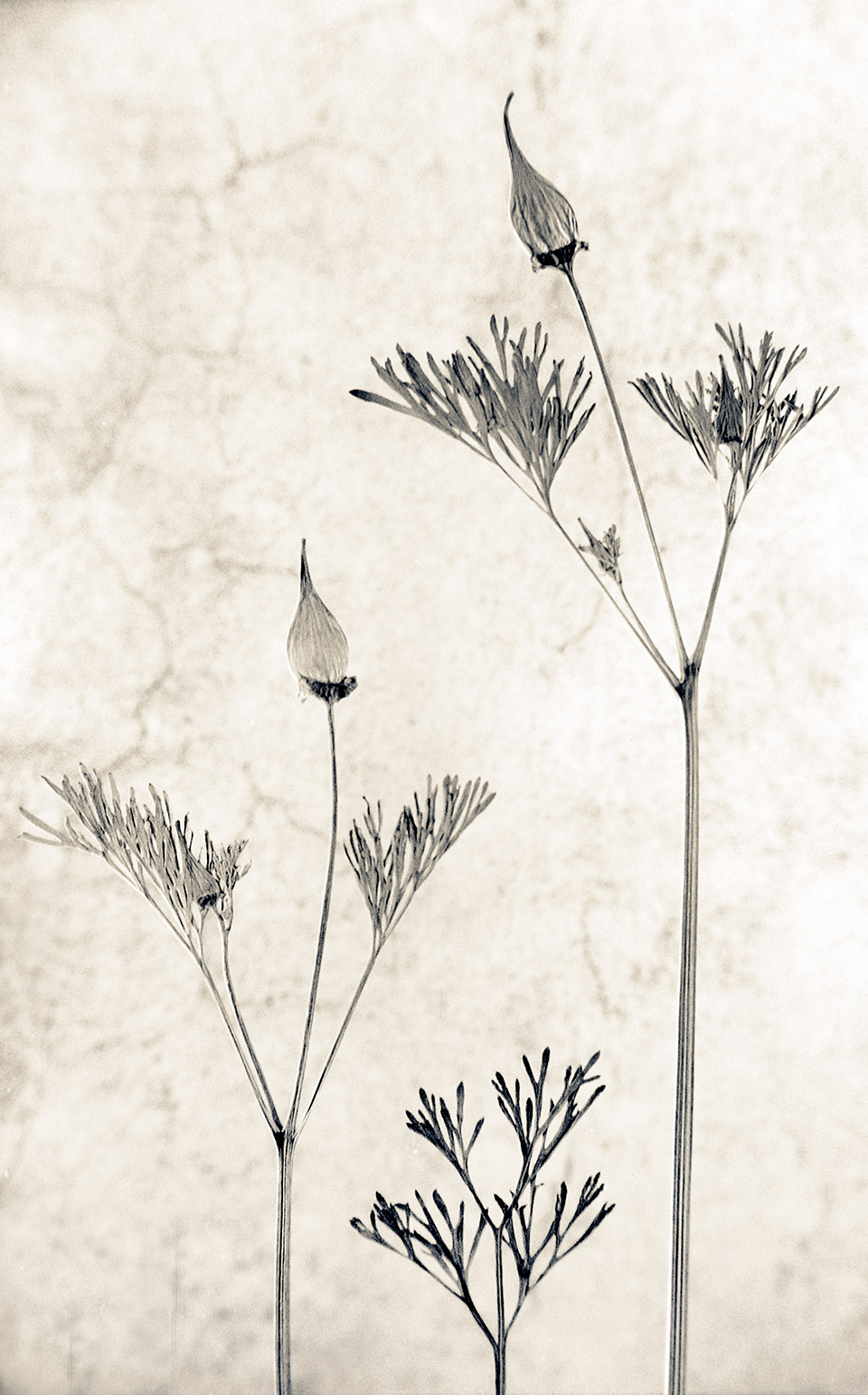
Doing close-ups with the Brownie is a challenge. The viewfinder is useless that close to the subject, so all you can do is line up the camera and subject, trip the shutter and hope for the best. The camera doesn’t move during these photographs, so I built a small platform for the subject, which I can move back and forth from my established point of focus to bracket the shots and be somewhat assured of a sharp subject.
Another challenge is that the depth of field is extremely shallow, making it difficult to put the point of focus where it best shows the subject. The depth of field is probably no more than a quarter-inch. The Brownie’s two aperture settings are roughly f/8 and f/11, so I’d use the smallest aperture and hope for the best.
Admittedly, I’m not a particularly technical photographer, so when I’m out making photos, I usually just start shooting in an attempt to get a feel for the film and my subjects. Many of the images in this collection were photographed over and over until I finally got the results I’d wanted — or at least could live with. I didn’t use a light meter; instead, I depended on the exposure flexibility of black-and-white film, and my own experience and familiarity with it, to determine exposures. After exposure, I’d load the film into a developing tank in a light-tight tent, develop it in the bathroom and shoot the negatives on a light table with my Canon EOS 5D Mark III, my Canon 80-200 mm lens and a full set of extension tubes to get a digital file I could later work with in Photoshop.
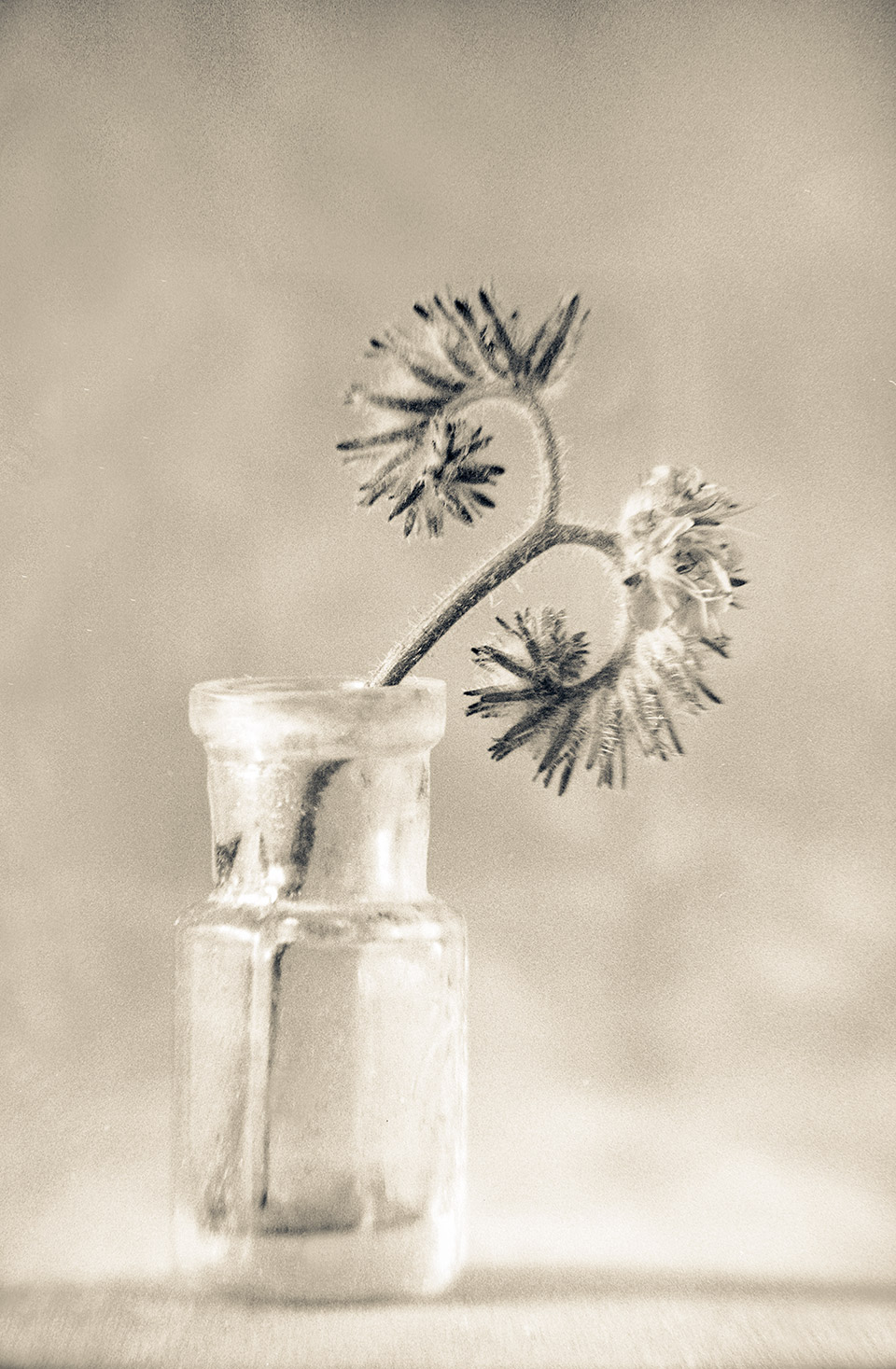
After photographing the plants and bottles for a while, I started thinking about other close-up images I could make with the Brownie. One idea was to gather and press native plants and flowers. After a few weeks, I had quite a few interesting subjects. For that series, I used a 38 mm 4X filter on the camera, which then was mounted on a copy stand and pointed down at the subject, which I arranged on a piece of glass below. After several configurations and test rolls, I was able to produce the photographs you see in this portfolio. And I did it all with the same camera I’d used seven decades ago to photograph my parents.

